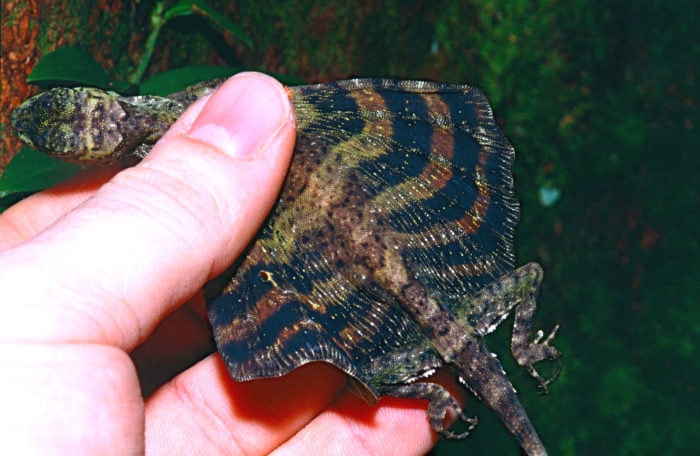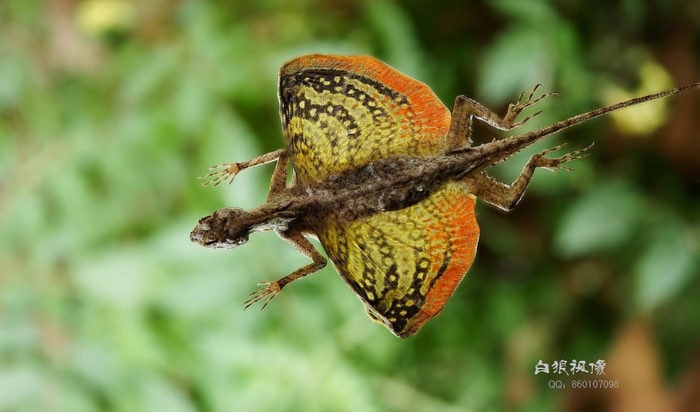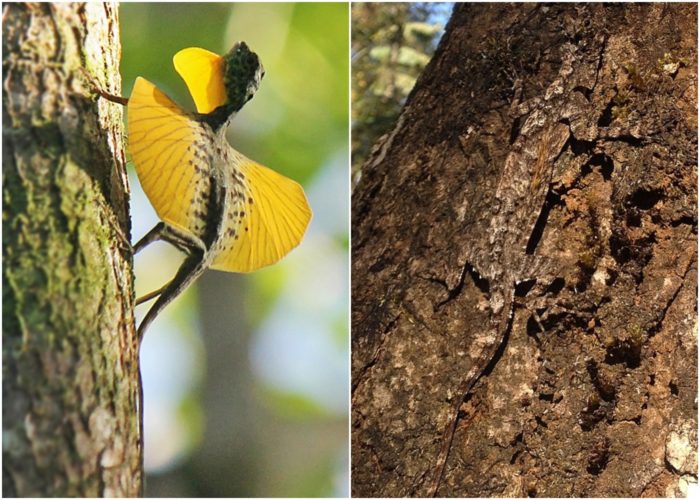The five-lined flying dragon is a tiny marvel

Bec Crew
Bec Crew

BORN WITH freakishly elongated rib cages that fan out more than twice the length of their own skulls, these lizards are made for gliding through the trees – from predators, towards rivals, and in search of mates.
The five-lined flying dragon (Draco quinquefasciatus) belongs to the genus Draco, which boasts more than 40 different species of winged lizard.
Unlike flying frogs, which use skin flaps between their toes to glide through the air, the five-lined flying dragon has ’wings’ – stretched skin that can retract and unfurl like a wingsuit. Technically known as patagia, the patterns on these skin flaps are unique to each species, which allows scientists to pretty easily tell them apart.
Here’s the five-lined flying dragon’s wings, and you can clearly see how it got its name:

(Image credit: Bernard Dupont/Flickr)
And here’s Draco volans, which also has the five lines, but check out those colours:

(Image credit: zhuxiaoyufish/Flickr)
Here’s the Sulawesi lined gliding lizard (left) and the southern flying lizard (right), demonstrating how the Draco colouring can serve to both camouflage and to show off:

Image credit: (L) A.S.Kono/Wikimedia (R) L. Shyamal/Wikimedia
As you can see, the names of these dragons use “flying” and “gliding” pretty indiscriminately, but there’s a specific technical difference between the two. Gliding is defined as ‘controlled falling’, when the angle of descent is less than 45 degrees, whereas flying actually has upward, powered momentum.
The members of the Draco genus are the only reptiles on Earth considered to be ‘true’ gliders, and they can soar for a record 60 metres over an elevation of just 10 metres above the ground.
Not content to flash some bright colours on their wings, Draco lizards have impressive dewlaps, too. And they’re not just for attracting mates – these are some mightily aggressive dewlaps.
Here they are in action, complete with some Attenborough commentary:




